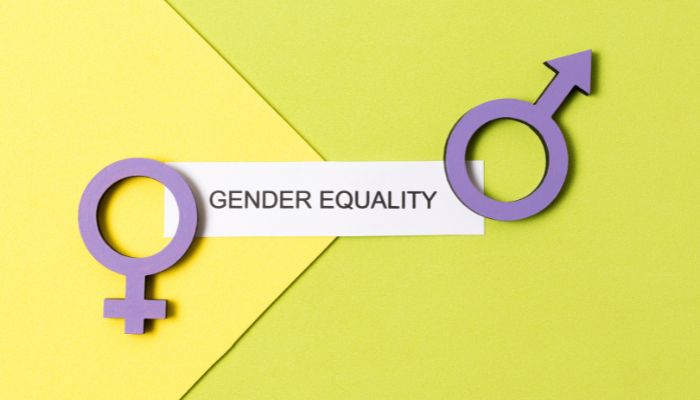At $3.2 trillion nominal GDP, India’s economy ranks as the 5th largest in the world. When adjusted for purchasing power parity, only the US and China would rank higher than the Indian economy. But getting a clearer picture of the Indian economy requires looking into other indices such as poverty level, GDP per capita, and literacy rate. With a Human Development Index (HDI) of 0.647 in 2018, India’s economy ranks as the 129th most developed economy in the world. This situation should be unexpected for an economy whose GDP is the 3rd largest in the world. However, when gender equality issues have ostracized half of the population from making any meaningful economic impact, this is what happens. In terms of women entrepreneurship and women in the workforce, India still has a long way to go.
You might also be interested to read: Women In Technology: These Factors Weigh Them Down
The realities of women entrepreneurship in India
India’s population is the 2nd largest in the world, and it represents 17.70% of the total world population. Out of its over 1.3 billion people, 48% are women. Since 1991, India’s economy has grown by 6 or 7 percent each year. This growth has translated to improvements in certain aspects of life, such as reduced fertility rate, increased access to electricity, cooking gas, and clean water. Even the level of educated Indian women has improved.
However, despite this growth, the participation of women in the workforce has dropped from 42.7% between 2004 and 2005 to 23.3% between 2017 and 2018. This decline in women’s participation in the workforce is expected to continue because of some labor trends, social barrier constraints, and technological disruptions.
According to the report of a study carried out by Bain and Company, female entrepreneurs own between 13.5 – 15.7 million enterprises in India. This number represents 20% of all enterprises. By probing further, it appears a vast majority of these enterprises are individually owned, and they employ between 22 million to 27 million people. But it turns out many of the companies reportedly owned by women are not necessarily such. The supposed “women owners” are just so on paper because of some administrative and financial advantages; as such, these women have no control over the activities of the organization.
The lack of a viable women workforce and an almost non-existent women entrepreneurship isn’t born out of a lack of trying. It’s an indication of the lack of gender parity prevalent within the Indian society. And this lack of gender equality has made it difficult for women entrepreneurs in India to flourish. As noted in the Bain & Company’s report, Indian women have strong ambitions to work. 90% of the women surveyed had ambitions to grow and scale their enterprises. But many challenges make this almost impossible.
Here are some of the challenges facing women entrepreneurship in India:
- Lack of access to relevant business and technical skills despite the increase in the level of women’s literacy.
- Insufficient funds amid a lack of personal savings and assets. This situation is made worse by the lack of financial support from close relatives, banks, and private investors.
- Inability to leverage human capital due to disintegration with formal and informal; thereby, constraining their ability to access business opportunities, mentors, and knowledge.
In addition to these challenges are socio-cultural barriers that discourage women from seeking financial freedom. Women are relegated to performing the role of caregivers at the household level, and equal rights to ownership of property and assets are ignored. This situation contributes to the reason why there’s a low level of women workforce. Investors wouldn’t finance women-owned establishments despite facts that show their profitability, brand loyalty, higher savings percentage, and similar ROI’s to male-owned enterprises.
These realities surrounding women entrepreneurship must change if India is to increase the high level of economic growth and overall development. India’s population is predominantly youthful as the median age stands at 28.4 years. Based on predictions, in ten years, India will have over a billion people within the working-age population, making it the largest in the world.
This demographic dividend, when combined with an increasingly educated population, has the potential to transform India’s economic and social development. However, the private and government sector alone has not been and will not be sufficient for generating the jobs required to spur this development. There’s the overwhelming importance of women’s empowerment in India to encourage women entrepreneurship as this is a vital component to finding an overall solution. It will not only boost the economy through job creation, but it will also deliver transformational social and personal outcomes for women.
Encouraging women in the workforce
The Indian economy has a lot to benefit from integrating a vast majority of its female population into the workforce and promoting an environment that supports women entrepreneurship. An increase in the quality and quantity of female entrepreneurs can lead to the creation of over 30 million women-owned enterprises. 40% of these enterprises can be co-operations, and this can lead to the creation of 150–170 million jobs. Consequently, this would outstrip projections for the creation of new jobs for the entire working population from now until 2030 by more than 25%.
To achieve this, India must begin to address the issues hampering the growth of women entrepreneurs in India. At the moment, out of the entire entrepreneurship base in India, only 14% are women. This situation has to change if India wants to achieve higher levels of growth and development. Women entrepreneurship can be accelerated through capacity-building. It’s already known that few of the existing female entrepreneurs are successful despite the barriers they face. As such, women entrepreneurship will increase when more women can access finance and relevant business and technical skills.
Furthermore, gender equality and gender parity must be upheld for the women workforce to grow. They must be free to seek financial freedom and own assets without prejudice. They can achieve this through the use of programs designed for the empowerment of women. By so doing, more women will be encouraged to seek a life outside the confines of their traditional and customary environment. When this happens, women will begin to grow in confidence as the society gradually strays from its gender bias mentality.
In all, for this reality to occur, there must be institutional reforms designed to remove the barriers preventing women from accessing resources with ease that would encourage women entrepreneurship.
References:
- Boosting women’s entrepreneurship and economic leadership | Sangita Reddy | September 17, 2020
- Sex ratio of India | Ministry of Statistics and Programme Implementation UN (World Population Prospects 2019) | March 18, 2020
- As India advances, women’s workforce participation plummets | Deepa Krishnan | May 15, 2020
- Powering the economy with her: Women entrepreneurship in India | Bain and Company | February 2020
You might also be interested to read:
Related Topics:






